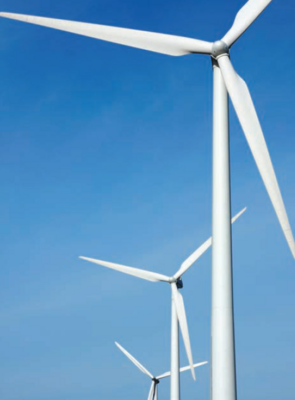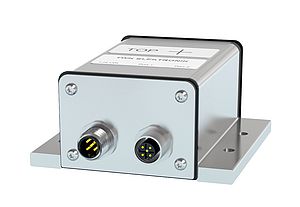Machines and systems without sensors are barely conceivable any longer. They ensure safety, a high level of efficiency and therefore increased competitiveness.
It is no longer a secret that our planet’s energy resources have to be managed. Achieving a specific objective with minimal use of energy is a task we all face today. This affects production systems, which have to operate in an energy-saving manner as well as energy generating systems which should deliver the highest possible degree of efficiency. Examples from the world of renewable energies are intended to show how intelligent sensor systems help to achieve this objective.
A wind turbine system primarily consists of a mast with a gondola, on which a rotor with three rotor blades is mounted. When the wind blows, the rotor rotates and drives a generator generating electricity. Behind the scenes a modern wind turbine system is a high-tech product, packed with intelligent components such as sensor systems.
By rotating around its own axis, the pitch adjustment system is used to set the rotor blades in the ideal position in relation to the wind. At higher wind strengths, the blades have to be rotated out of the wind, as the strain placed on the turbine system is too high and the flow conditions at the blades become unfavourable. At low wind strengths, they are rotated into the wind so that more energy is obtained. In order to achieve the highest possible level of efficiency, adjustments have to be carried out very accurately. The use of precision sensor systems is therefore required. When the rotor blades are moved, rotary sensors measure the current orientation of the blade. The rotor blade angle range in which the wind turbine system operates optimally at a specific wind strength is narrow. The accuracy requirements made on the installed sensors are accordingly high.
Besides the pure angle signal, modern sensor systems are able to out put additional switching signals which indicate e.g. end positions. In the case of the rotor blades, these are usually the 0°,90° and calibration positions. This can be carried out via a field bus interface within the framework of the bus protocol or, classically, via switching contacts.
High-performance microcontrollers are now so inexpensive that they can be used in sensors without causing the price to soar. Thanks to the redundant sensor system design and firmware which meets current safety requirements (SIL), therotary sensor checks itself and informs the control system when something is not right. Modern sensors are able to receive firmware updates via a PC. Within limits, they can therefore be reprogrammed, without even removing them.
Rotary sensors are also used on the rotorshaft to determine the rotational speed and the rotor position. The rotational speed is the essential output variable forthe above described pitch adjustment. The rotor position provides information on the position of each rotor blade at all points intime. Wind conditions along the length of the rotor, are not identical. Windless precisely in front of the mast but it will be higher in the upper rotor area than further down.
Fine regulation of the blade position is carried out to take this into consideration. If the relevant rotor blade is currently locatedin the upper area, it is turned slightlyout of the wind. If it moves down again, the reverse is carried out. This individual blade adjustment is a further step towards increased wind turbine system effi ciency.The sensor systems required for this on the rotor shaft and the rotor blade intermesh to achieve an optimal final result. These examples from the field of windpower show how important intelligent sensor systems in machines and systems have become to make these efficient and therefore competitive. Their absence is now inconceivable.


















